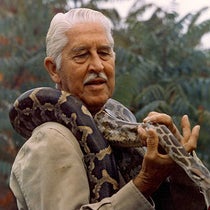Scientist of the Day - Lazarus Ercker
Lazarus Ercker was a Bohemian metallurgist and assayer about whom we know very little. His birth day and year is unknown; he seems to have died in 1594, but the day of his death is also unknown. However, he did leave behind a published book, and it is the book we celebrate today. It was called Beschreibung allerfürnemsten mineralischen Ertzt und Berckwercksarten (Treatise describing the foremost kinds of metallic ores and minerals), first published in 1574. The title page of the second edition (1580), which is the copy that we have at the library, tells us a little bit more about Ercker – that he was the Superintendent of Mines for the Holy Roman Emperor, who at the time was the Habsburg Rudolf II. We feature Ercker today because we felt that he and his book deserved notice, even if we don’t have a date we can pin him to.
Ercker's publication is a lovely example of the book-maker’s art. Sixteenth-century mining and metallurgical books are in general very impressive anyway, due to the example set by Vannoccio Biringuccio’s De la pirotechnia (1540) and Georg Agricola’s De re metallica (1556), both with scores of attractive woodcuts. Our copy of Ercker raises the bar, even on Agricola, because although it has fewer woodcuts, they are all hand-colored. As you can see from the reproductions here, ours is an exceptional copy. We bid for it successfully at the last of the auctions of the impressive Honeyman collection in 1981.
Assaying was as practical and useful a science as one could find in the late Renaissance. Being able to identify and evaluate metal-bearing ores, and having the skills to extract metal from those ores, was knowledge crucial to any state's economy. It is clear from the Beschreibung that Ercker was a master of the art. He devoted long chapters to gold ores and silver ores, and various methods of extracting the metals, and a shorter one to copper. Interestingly, Ercker did not discuss iron smelting at all, even though in hindsight, iron would seem to be of much greater value than gold or silver to a ruler like Rudolph II. But none of the early metallurgists paid much attention to iron; it was apparently not yet a noble metal.
Our images show: the screening and washing of gold ore in a sluice (first and second images); apparatus for smelting gold (third image); a detail illustrating a technique for extracting silver from prepared copper-lead cakes (fourth image); and a setup for concentrating saltpeter in vats (fifth image).
The titlepage of our copy (sixth image) was apparently exposed to the air for some time before the book was bound up in its vellum wrappers, for it is fly-spotted and considerably darker that the rest of the leaves. But the titlepage vignette is nevertheless of interest, because it depicts a completely equipped assayer’s laboratory, perhaps Ercker’s own. We show a detail in our final image.
Ercker’s book was very popular and frequently reprinted. It was also the only one of the three great Renaissance metallurgical books (by Agricola, Biringuccio, Ercker) to be translated into English in early modern times. John Pettus’s Fleta minor (1683), a translation of the 1580 edition of Ercker, is notable because Pettus replaced all of the woodcuts showing German miners and metalworkers with engravings peopled by distinctly English craftsmen. We have a copy of Pettus’s original book on mining (1670), but we do not have the Fleta minor. It would be a nice book to acquire.
Dr. William B. Ashworth, Jr., Consultant for the History of Science, Linda Hall Library and Associate Professor emeritus, Department of History, University of Missouri-Kansas City. Comments or corrections are welcome; please direct to ashworthw@umkc.edu.












